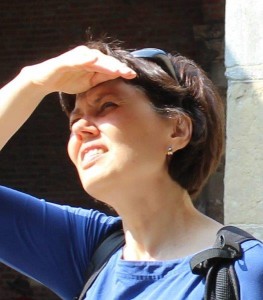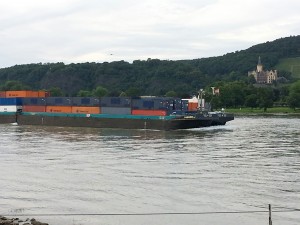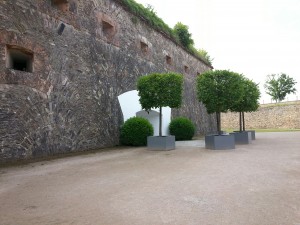 Osallistuin syyslukukaudella koulutukseen, jonka vetäjä useampaan kertaan ohi mennen mainitsi, että osa kasvatustieteellisestä tutkimuksesta ei ole oikeata tiedettä, vaan erilaista kehittämishankkeiden raportointia. Joka kerta väitteen kuullessani minun tuli mieleni nostaa käteni vastatakseni ilkikurisena, että lukijalle tällaiset raportit voivat olla sitä oikeaa tiedettä arvokkaampia.
Osallistuin syyslukukaudella koulutukseen, jonka vetäjä useampaan kertaan ohi mennen mainitsi, että osa kasvatustieteellisestä tutkimuksesta ei ole oikeata tiedettä, vaan erilaista kehittämishankkeiden raportointia. Joka kerta väitteen kuullessani minun tuli mieleni nostaa käteni vastatakseni ilkikurisena, että lukijalle tällaiset raportit voivat olla sitä oikeaa tiedettä arvokkaampia.
Pohdin tietenkin omaa työtäni, opettamista. Opettajat kehittävät opetustaan ja opettajuuttaan joka päivä käytännössä. Ajan mittaan he keräävät ymmärrystä siitä, mikä toimii ja mikä ei. Se mikä toimii, on kontekstisidonnaista: jos jokin toimii nyt, se ei takaa toimimista toisella kerralla. Tärkeätä olisi kuitenkin jakaa tätä ymmärrystä.
Olinkin ilahtunut, kun luin Juha Jalkasen soveltavan kielitieteen väitöskirjaa Development of pedagogical design in technology-rich environments for language teaching and learning, jossa hän tarkastelee teknologian roolia pedagogisessa kehittämisessä. Väitöksessään Jalkanen toteaa esimerkiksi, että opettajaksi opiskelijat suhtautuvat teknologiaan lähinnä välineenä, kun mahdollista olisi pitää sitä toimintaympäristön luonnollisena piirteenä. Teknologiarikkaassa ympäristössä opetus ja oppiminen ovat usein ennakoimattomia, koska oppijoilla on käytössään monenlaisia resursseja. Ilahtumiseni liittyi kuitenkin yhteen Jalkasen johtopäätöksistä: Opettajia – jotka ovat usein kiireisiä – pitäisi tukea tekemään pienimuotoisia kokeiluja. Kokeilujen dokumentointi auttaa reflektoimaan tapahtumaa, ja reflektointi kehittämään opetusta edelleen.
Tästä rohkaistuneena aion nyt raportoida pienimuotoisen opetuskokeilun, joka sekin liittyy teknologian käyttöön kielen oppimisessa. Lähtökohtana ei ollut teknologian käyttö, mutta teknologia mahdollisti kokeilun toteuttamisen.
Yammer-viestintää venäjäksi
Viime kevätlukukaudella pohdin yhdessä tšekkiläisen kollegan, Masarykin yliopistossa venäjää opettavan Monika Ševečkován kanssa, saisimmeko opiskelijamme viestimään toistensa kanssa venäjäksi. Suunnittelimme projektin, jossa opiskelijat kuvaisivat lyhyitä videoita valitsemistaan aiheista sekä kävisivät videoista keskustelua – tietenkin venäjäksi. Tavoitteenamme oli, että opiskelijat saisivat kokemuksen venäjästä yhteisenä kielenä, pääsisivät harjoittelemaan ”aitoa” venäjänkielistä viestintää sekä harjoittelisivat niin tiedonhankintaa, tiedon esittämistä kuin vuorovaikutustakin. Syyslukukaudella toteutimme projektin. Välineeksi valikoituivat opiskelijoiden omat välineet ja videokanavat sekä keskustelualustaksi Yammer, johon perustimme verkoston projektia varten.
Mitä opettajina opimme ja miten opiskelijat suhtautuivat projektiin? Ensinnäkin viestintä Yammer-ympäristössä näytti opiskelijoille olevan luontevaa – kun itse sosiaalista mediaa vähemmän käyttävänä esimerkiksi vierastin alhaista julkaisukynnystä, opiskelijoille tämä ei ollut ongelma.
Opiskelijoille luonnollinen osa viestintää olivat myös emojit ja peukutukset. Videoinnissa ja videokanavien käytössäkin opiskelijat osoittivat asiantuntevuutensa. Alun käynnistyksen jälkeen projekti etenikin kivuttomasti – mutta toki opiskelijat toivoivat, että opettaja osallistuu ja aktivoi opiskelijoita vaikka nimellä keskusteluun. Oppimisen näkökulmasta työskentelytapa oli hedelmällinen: jatkuva kielen käyttö auttoi tehokkaasti aktivoimaan opiskeltua. Koska keskustelu kulki omia, ennakoimattomia reittejään, auttoi projekti erään opiskelijan mukaan myös arvioimaan sitä, mitä ei vielä osaa, ja asettamaan tavoitteita tulevalle oppimiselle. Yammerissa saattoi käydä silloin kun se omiin aikatauluihin sopi, mikä kiireisille opiskelijoille oli helpotus. Lisäksi meillä osallistujilla oli hauskaa. Projekti saakin jatkoa, muokattuna ja kehitettynä.
Ei pelkästään kielitaitoa
Meidän pitäisi mahdollisuuksien mukaan opettaa opiskelijoille taitoja, joita he tulevaisuudessa tarvitsevat. Työpaikoilla Yammerin kaltaiset alustat ovat arkipäivää, joten niihin on hyvä tutustua jo opinnoissa. Projektin päätyttyä mietin, olisiko videon laatiminen myös yksi tällainen taito. Sain nimittäin linkin joukkorahoitussivulle, jossa eräs opiskelija haki alkupääomaa räätäliateljeen perustamiselle. Idea esiteltiin tietenkin lyhyellä videolla. Olisiko hän ilman tätä videota saanut pääomaa kokoon ja päässyt toteuttamaan unelmaansa?
Heidi Mäkäläinen
Kirjoittaja on venäjän yliopisto-opettaja, joka tähyilee alati uusiin tapoihin opettaa. Sielunmaisema löytyy kuitenkin Alpeilta – siellä myös venäjänopetus unohtuu.




